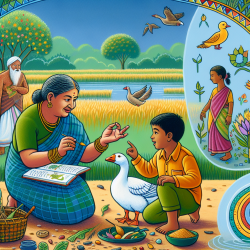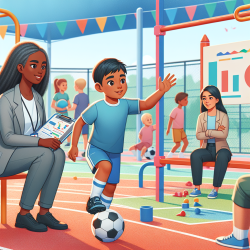Introduction
In the world of child therapy, innovative approaches are essential for creating impactful outcomes. One such approach is inspired by the research on Indigenous land-based practices, specifically the Niska (Goose) Harvesting Program in Subarctic Ontario, Canada. This program not only revitalizes cultural practices but also promotes well-being through a unique blend of Indigenous knowledge and Western methodologies.
Understanding the Niska Program
The Niska Program was designed to reconnect Elders and youth in the Omushkego Cree community to traditional goose harvesting practices. It utilized a two-eyed seeing approach, combining Indigenous and Western perspectives to assess well-being. Despite no significant changes in salivary cortisol levels—a biomedical stress measure—participants reported increased subjective well-being through qualitative measures such as interviews and photovoice.
Lessons for Practitioners
Practitioners in child therapy can draw several key insights from the Niska Program:
- Incorporate Cultural Practices: Integrating cultural elements into therapy can enhance engagement and outcomes. The Niska Program's success in revitalizing cultural practices demonstrates the power of cultural continuity in promoting well-being.
- Utilize a Holistic Approach: The two-eyed seeing approach allows for a comprehensive understanding of well-being, blending biomedical and cultural perspectives. This holistic view can be applied in therapy to address complex issues such as stress and trauma.
- Foster Intergenerational Connections: The program's focus on connecting youth with Elders highlights the importance of intergenerational learning. In therapy, fostering such connections can provide children with a sense of identity and belonging.
Encouraging Further Research
While the Niska Program offers valuable insights, further research is necessary to explore its full potential in different contexts. Practitioners are encouraged to investigate how similar land-based programs can be adapted for diverse communities and therapeutic settings. Understanding the cultural and environmental factors that influence well-being can lead to more effective interventions.
Conclusion
The Niska (Goose) Harvesting Program exemplifies how Indigenous knowledge can inform innovative approaches in child therapy. By incorporating cultural practices, utilizing a holistic approach, and fostering intergenerational connections, practitioners can enhance the well-being of children. To delve deeper into the research behind this program, you can read the original research paper, Indigenous Land-Based Approaches to Well-Being: The Niska (Goose) Harvesting Program in Subarctic Ontario, Canada.










